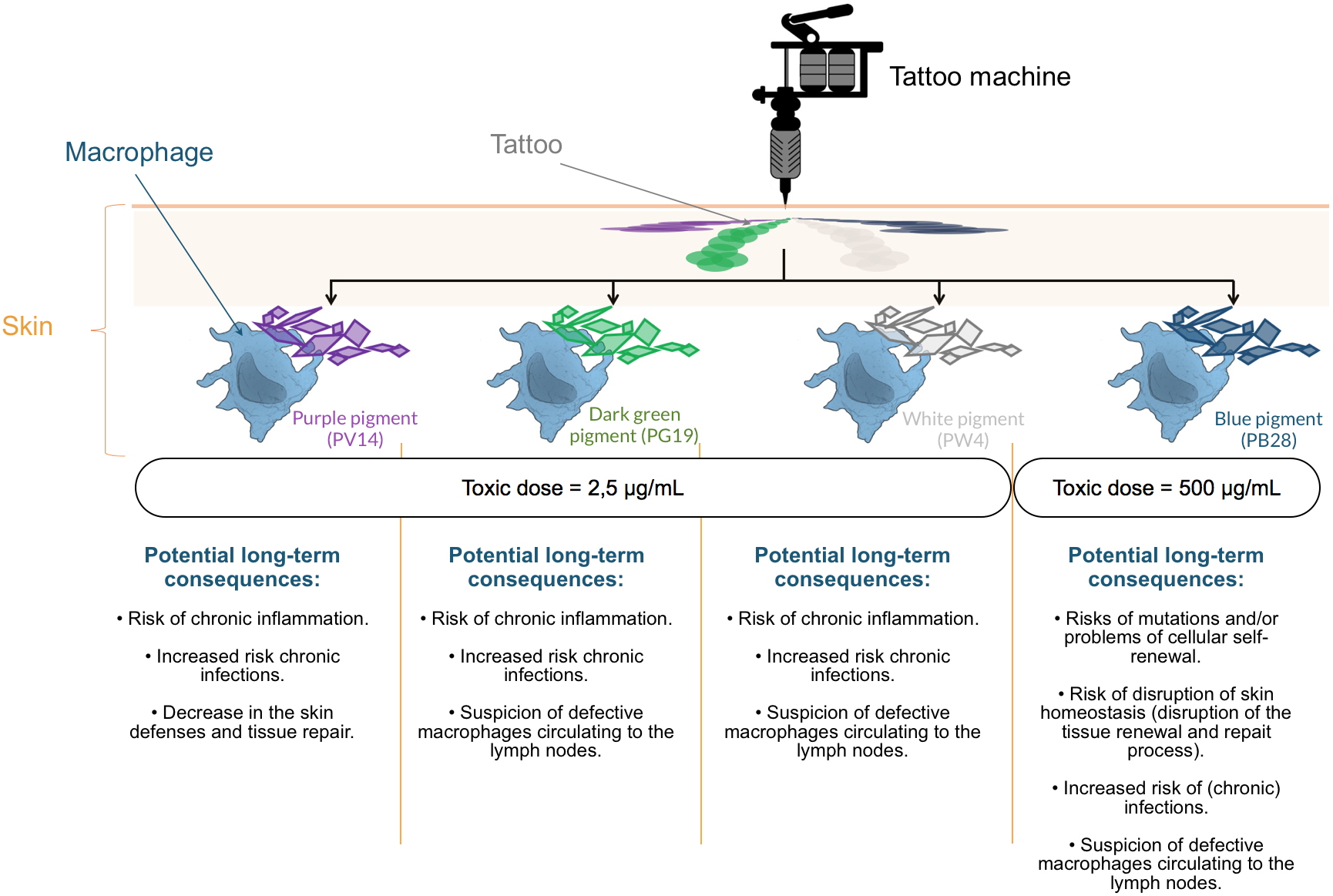Tattooing is a practice that traces back to the Stone Age, and consists in injecting non-biodegradable and persistent pigments into the dermis. This practice has been democratized since the 1970's and the number of followers has not stopped growing with a younger and younger public. Today, approximately 100 million people are tattooed in Europe. Motivations can be cultural (fashion phenomenon) or medical, e.g. to conceal scars, breast reconstruction and targeting of areas to be treated by radiotherapy. The current fashion tends to increase both the surface of tattooed skin and the number of colors used. This exposes the skin to a large variety of substances present in the pigments which can be mineral (based on metallic particles) or more recently, organic (based on dyes resulting from petrochemistry).
Short-term effects of tattooing such as transient inflammation are very frequent and widely documented. However, the question arises of possible long-term effects, i.e. several years after the tattooing. Indeed, the skin is far from being inert and can respond to these exogenous substances which, in fact, evolve during the lifetime. Currently, it is still difficult to evaluate the link between tattoos and chronic diseases, from simple dermatosis to auto-immune diseases and a possible greater sensitivity to cancers. Only clinical cases inform us about a possible relation of cause and effect, without really determining the associated mechanisms.
IRIG researchers propose to evaluate the effects of different pigments used as tattoo ink on a cell type present in the dermis and responsible for the persistence of the tattoo: macrophages. Macrophages are immune cells that play a key role in the inflammatory response and the proper functioning of the skin. In the case of tattooing, macrophages internalize the pigment particles and immobilize them at the injection site, which induces the long-term permanence of the tattoos. How do some of these pigments used in the composition of inks act on macrophages? How do these cells respond to this new stress and to the ingestion of a large quantity of particles that are not naturally present in the skin? What are the long term effects since the tattoo is present for a lifetime? These are the questions that IRIG researchers seeked to answer by developing a long-term cell culture model of macrophages.
To this purpose, the pigments were first characterized by evaluating their size, their shape, their capacity to dissolve in a biological environment. These characteristics may influence their effects. Then the toxic dose of each pigment tested was determined on macrophages. Finally, the perturbations on the macrophage functions and the mechanisms involved in the possible toxicity were evaluated. All the tests were performed just after exposure to the pigments and several days later in order to investigate the persistence of the effects over time. The researchers were able to conclude that the short-term functional and delayed effects were more or less important from one pigment (material) to another.

Possible effects of cobalt pigments.